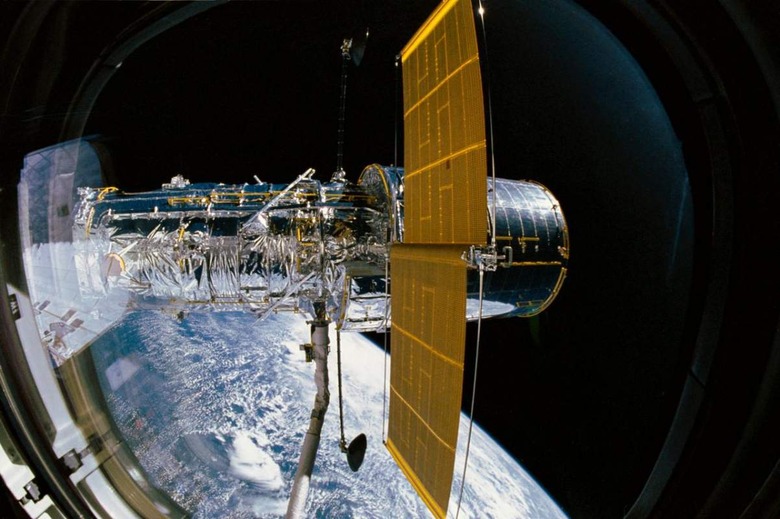NASA Recovered One Hubble Instrument While Others Remain In Safe Mode
The last few months have been challenging for the Hubble Space Telescope and the team of scientists and engineers overseeing the iconic observatory. NASA has confirmed that it has successfully recovered the Advanced Camera for Surveys instrument aboard the Hubble as of November 7. As of that date, the instrument has begun making science observations again. However, the other instruments aboard Hubble remain in safe mode.
The Hubble team continues to investigate lost synchronization messages first detected on October 23. Hubble mission teams selected the Advanced Camera for Surveys instrument as the first to recover because it has the fewest complications if a lost synchronization message occurs. NASA continues to investigate the root cause of synchronization issues and says that no additional problems have surfaced so far.
Mission teams are considering short-term solutions this week and will develop estimates for the implementation of these fixes. Once implementation estimates are complete, the team can discuss recovering other instruments and returning them to operational status to resume work. The investigation has been ongoing since October 23, when the issue was first detected.
Hubble science instruments issued error codes at 1:46 AM EDT on October 23, indicating the observatory had multiple losses of synchronization messages. Instruments aboard the telescope were designed to enter safe mode if this type of error occurred. NASA was clear during the investigation that the spacecraft was operating as expected. All of the non-recovered instruments are healthy and currently operating in safe mode while the investigation is underway.

After resetting the instruments and resuming science operations, on October 25 at 2:38 AM EDT, the science instruments again issued the same error codes and entered safe mode states again. On November 4, the Hubble team focused efforts on isolating problems with the hardware commanding instrument that is part of the Science Instrument Command and Data Handling Unit. The team analyzed the circuitry of the Control Unit that generates synchronization messages that are sent to the instruments.
During their efforts to analyze the Control Unit mission, team members were also working to identify workarounds for the issue. Workarounds could include changes to instrument flight software, allowing it to check for lost messages and compensate for them without causing instruments to enter safe mode. NASA also noted that ground simulators would verify any potential workaround to ensure it works as expected.
During the week of October 30, Hubble team members prepared to reactivate the Near Infrared Camera and Multi Object Spectrometer (NICMOS) instrument to collect data on the problem and possibly determine how frequently the issue occurred. NICMOS is an instrument installed aboard the Hubble in 1997 that has been inactive for over a decade. That instrument has been inactive since 2010 when Wide Field Camera 3 went operational.
By using a decommissioned instrument aboard the Hubble, NASA could collect information on lost messages without risking active instruments. After recovering NICMOS, no additional synchronization messages were lost. After conducting tests using the retired instrument, team members begin taking steps to recover the Advanced Camera for Surveys instrument. If any additional lost synchronization messages were recorded, NASA said it would revisit its decision to activate the Advanced Camera for Surveys.
